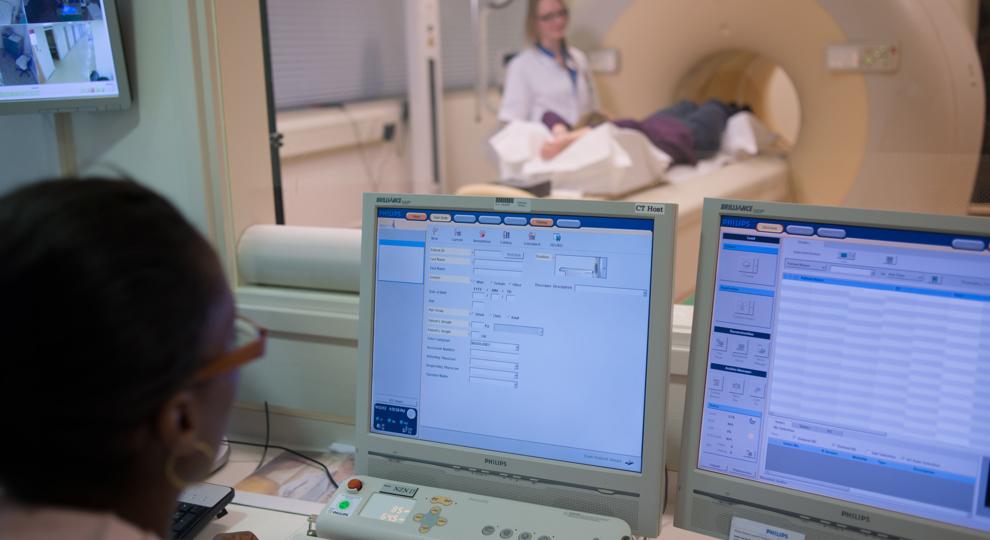Sentinel node biopsy (scintigraphy)
What is a sentinel node biopsy?
A sentinel node biopsy can help us examine the first lymph node to which a tumor can spread. These lymph nodes are called sentinel nodes: the nodes that have the closest connection to the tumor. The biopsy can be performed for people with a variety of tumors such as head and neck tumors, breast cancer, skin cancer, or gynecological and urological tumors. Once the sentinel lymph node has been detected, it will be surgically removed.
We will administer a small dose of radioactive substance into or around the tumor or scar. Your lymph nodes will drain this solution, allowing it to be absorbed by the lymph node with the closest connection to the tumor. This is the sentinel node, the lymph node at risk of metastases. Sometimes multiple nodes can be sentinel nodes.
Once the sentinel lymph nodes have been made visible through imaging, we will mark their location on the skin, which will help your surgeon find the correct lymph nodes. After removal, the sentinel lymph nodes will be analyzed at a lab to detect potential tumor cells.
Duration
The procedure will take approximately 15 to 30 minutes.
After the procedure
After the procedure you can go home or back to the ward, depending on whether your surgery is scheduled for that same day, or the next day.
 nl
nl
 Nederlands (Nederland)
Nederlands (Nederland)
 English (United States)
English (United States)

